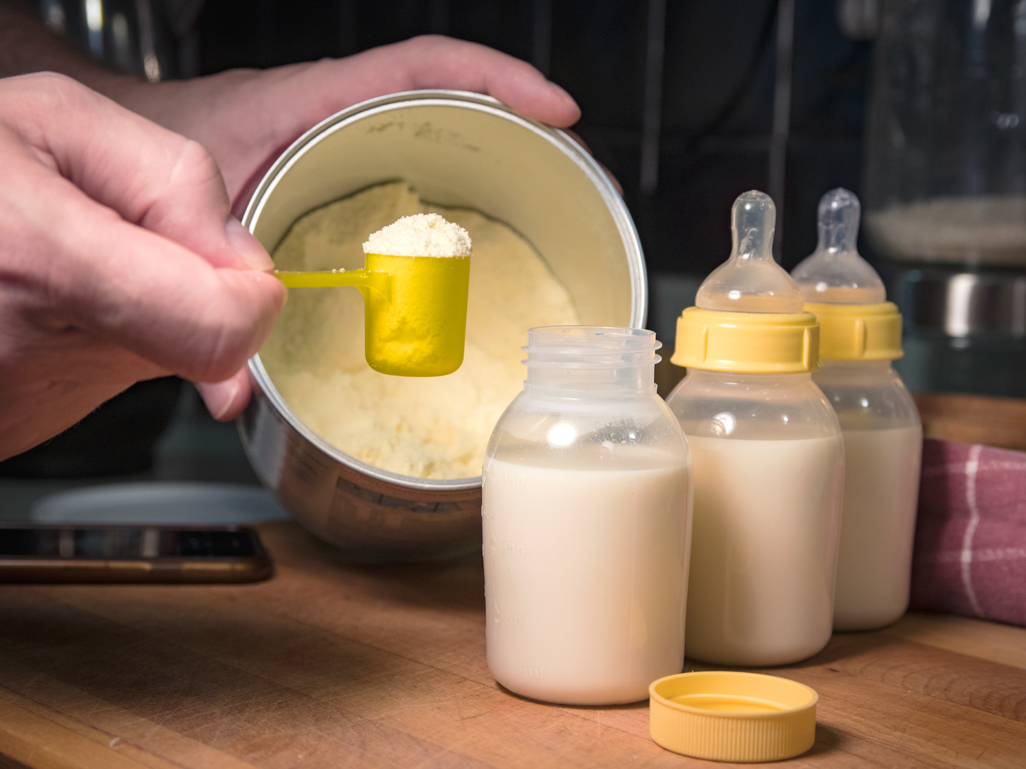Switching Baby Formula: A Step-by-Step Guide
Deciding to change your baby’s formula can feel overwhelming. There are many reasons why you might consider a switch, ranging from digestive issues to allergies or even financial considerations. Fortunately, with a careful and gradual approach, switching formulas can be a smooth process for both you and your baby.
When to Consider Switching
There are several common reasons why parents choose to switch baby formulas:
- Digestive Discomfort: If your baby experiences frequent fussiness, gas, bloating, constipation, or diarrhea, their current formula might not agree with them.
- Allergies or Sensitivities: Symptoms such as rashes, eczema, vomiting, wheezing, or difficulty breathing could indicate a food allergy or intolerance, and a specialized formula might be necessary.
- Medical Conditions: Your pediatrician might recommend switching formulas to address specific medical needs or provide specialized nutrition.
- Availability or Cost: Sometimes, switching formulas may be due to limited availability of your current brand or seeking a more affordable option.
Always Consult Your Pediatrician
Before making any changes to your baby’s diet, always seek advice from your pediatrician. They can assess your baby’s health, confirm the need for a switch, and help you choose the most appropriate new formula.
Understanding Types of Formula
Here’s a quick overview of the main types of baby formula:
- Cow’s Milk-Based: The most common and readily available type. However, it’s not suitable for babies with a cow’s milk allergy or lactose intolerance.
- Soy-Based: A dairy-free alternative for babies with lactose intolerance or cow’s milk allergy.
- Hypoallergenic: These formulas contain broken-down proteins that are easier for babies with allergies or sensitivities to digest.
- Specialized Formulas: Various formulas cater to specific needs such as prematurity, metabolic conditions, acid reflux, and others.
Making the Switch: A Gradual Approach
The key to a successful formula switch is a gradual transition. Here’s how to do it:
-
Start Slowly: Begin by mixing a small amount of the new formula with your baby’s existing one. For example, try a ratio of 3 parts old formula to 1 part new formula.
-
Increase Gradually: Over several days, slowly increase the proportion of the new formula. You can adjust the rate of change based on how your baby tolerates it.
-
Monitor for Reactions: Pay close attention to how your baby reacts to the new formula. Be aware of any changes in their digestion, bowel movements, skin, or overall fussiness.
Tips for a Successful Transition
-
Similar Base: Try choosing a new formula with a similar base ingredient (cow’s milk, soy, etc.) as your baby’s current one to minimize potential digestive upset.
-
Don’t Dilute: Always follow preparation instructions carefully and never dilute the formula, as this can deprive your baby of essential nutrients.
-
Strategic Timing: Introduce the new formula during a calmer time of day when your baby is less prone to fussiness.
-
Consistency is Key: Once you start transitioning, offer the new formula consistently to help your baby adjust.
-
Extra Comfort: Provide additional cuddles and reassurance during the transition period, as the change in formula might be unsettling.
When to Seek Professional Help
Contact your pediatrician immediately if your baby experiences any severe reactions while switching formulas. Signs to watch out for include:
- Persistent vomiting
- Bloody stools
- Diarrhea
- Full-body rash
- Difficulty breathing
Important Note: Always consult your pediatrician before changing your baby’s formula.
Conclusion
By working closely with your pediatrician, choosing the right formula, and introducing it gradually, most babies successfully adjust to a new formula. Remember, patience and careful observation are crucial for a smooth transition. Prioritize your baby’s well-being and reach out to your healthcare provider if you have any concerns.
